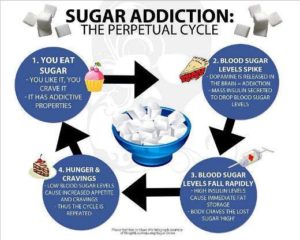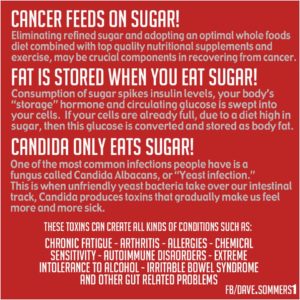by Susan Dean | Nov 13, 2019 | Food and Health Dangers, Health
Our government won’t protect us from these
harmful chemicals, so we have to protect ourselves.
The endocrine system is the system of glands,
hormones and hormone targets that is responsible for almost everything our bodies do. Hormones are chemical messengers that control blood sugar, infant and child development, sexual function, growth, energy production and much more. Tiny amounts of them have profound effects on our health and wellbeing.
Synthetic chemicals, used in industry and agriculture, can disrupt the way this finely tuned system works. We call these chemicals—including compounds made from lead, mercury and arsenic, DDT, BPA and phthalates are endocrine disrupting chemicals.
These chemicals are known to cause obesity, diabetes, heart disease, reduced fertility, premature birth, reduced sperm quality and cancer. Exposures before birth, during childhood and the teenage years are important because of the rapid growth and development during those periods. New research indicates that some EDCs cause problems that are passed along for generations.
A study released by Healthy Babies Bright Futures highlights the pervasiveness of the endocrine-disrupting chemical, arsenic. The study found that levels of arsenic in infant rice cereal are six times higher than in infant cereals made from other ingredients.
Arsenic can kill and it also causes cancer, damages developing brains in babies and children, reducing IQ test scores, and disrupts important hormones in our bodies, and increases the risk of diabetes.
Children’s exposures to arsenic in infant rice cereal and other rice-based foods accounts for an estimated loss of up to 9.2 million IQ points among U.S. children ages 0-6. The FDA has not taken action, and this administration will
let this travesty continue.
Almost none of us escape exposure to EDCs. BPA is so ubiquitous that government studies found it in over 90 percent of the people studied, representing a potentially huge liability for the companies that make BPA.
For the last century, the foundation of chemical regulation has been that small exposures are not a problem— a little won’t hurt you. Endocrine disruption turns that concept on its head, because hormones are active in such small amounts. Some endocrine disruptors are more potent in tiny amounts than in larger amounts. Fundamental changes in chemical testing and safety determination are needed to protect human health.
Weak regulations mean we really have no idea how many chemicals are endocrine disruptors. The EPA says there are about 85,000 chemicals used by industry, and most of them have never been tested to find out if they can disrupt our hormones. There is evidence that over 1,400 hormone-disrupting chemicals are endocrine disruptors.
About 25 years ago, Congress passed a law
stating that the EPA should begin testing for endocrine disruption in a subset of those 85,000 chemicals. It hasn’t happened, and in today’s political climate it’s not likely to happen. Fortunately, there are some easy ways to reduce your exposure to EDCs:
-
Eat organic food when it’s available and affordable.
-
If you’re feeding a baby cereal, stay away from rice. Buy oat, wheat or multigrain cereal instead.
-
Avoid household bug sprays.
-
Use cosmetics, shampoos and soaps with simple, pronounceable ingredients.
-
Use cleaners like vinegar and baking soda, or products with the Safer Choice logo.
-
Keep rooms well aired and vacuum, clean and dust regularly to remove chemicals that can be found indoors.
-
Minimize unnecessary use of plastics.
-
Add your name to the growing movement to stop EDCs.It’s time companies like Monsanto, Dow-DuPont and ExxonMobil take responsibility for gambling with your family’s health and the health of future generations and stop making these silent killer chemicals. We deserve nothing less.
-
Caroline Cox is the Senior Scientist at the Center for Environmental Health.
by Susan Dean | Feb 2, 2018 | Food and Health Dangers, Health
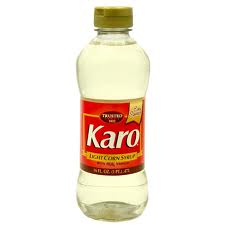
High-fructose corn syrup is a ubiquitous ingredient present in processed foods and sugary beverages across the globe. It is a well-known health destroyerwith ties to conditions like metabolic damage and cancer. Now, scientists have revealed that the substance — oftentimes genetically modified — may also be damaging the brain functions of consumers worldwide. The official release goes as far to say that high-fructose corn syrup can make you ‘stupid’. Conducted by the UCLA and published in the peer-reviewed Journal of Physiology, the study is the first to demonstrate how a diet heavily concentrated with high-fructose corn syrup can hamper brain functions — particularly those associated with memory and learning.
“Our findings illustrate that what you eat affects how you think,” said professor of neurosurgery Fernando Gomez-Pinilla, from the David Geffen School of Medicine at UCLA.
The findings should come as no surprise, given that it has previously been revealed that high-fructose corn syrup oftentimes contains the toxic heavy metal mercury. Mercury is highly dangerous and can cause serious complications with biological function — particularly when exposed to the substance on a daily basis through food intake and other sources (CFL light bulbs, amalgam fillings).
Despite the negative effects of high-fructose corn syrup on the brain, the scientists found that there are natural solutions that can help to minimize and negate the damage. Scientists found that omega 3′s helped to fortify the brain after observing the results of feeding both flaxseed oil and DHA to the study rats. The scientists found that the omega 3′s were helpful in aiding the ability of brain cells to transmit signals to one another. As a result, memory and total mental ability is improved.
It is continually being found that high-fructose corn syrup is highly toxic to the human body, and is absolutely unfit for consumption. There is simply no reason why the ingredient should exist within the food supply, other than to save companies money. Natural Society
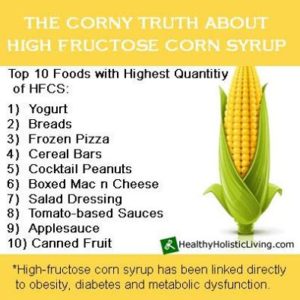
by Susan Dean | Feb 2, 2018 | Food and Health Dangers, Health

Toxic Chewing Gum Commercial gum products are some of the most toxic substances that you can expose yourself to and can lead to some of the worst diseases. The most common ingredients are:
Sorbitol, Xylitol, Mannitol, Maltitol,
Gum Base
Glycerol,
Natural and Artificial Flavors,
Hydrogenated Coconut Oil and Starch
Aspartame, Acesulfame
Soy Lecithin
Colors (titanium oxide, blue 2 lake, red 40)
BHT,
Malic Acid, Citric Acid
Every time you chew gum, your brain is tricked into thinking that you are eating food and sends signals to your stomach, pancreas and other organs involved in digestion to prepare for this “food”. Your salivary glands and pancreas begin to emit enzymes necessary to digest food and absorb nutrients from food. Constant emission of enzymes can deplete enzymes and over time the process can slow down. If you are not breaking down and absorbing food properly, you get diseases because the body needs nutrients to rebuild and thrive.
An alternative gum for fresh breath is to carry a small bottle of organic food grade peppermint oil and put a drop in your mouth to achieve the same effect. A breath freshener used ages ago that I like is to chew a few fennel or dill seeds. They are very refreshing to the breath . . . and free. Fennel and dill are super easy to grow and bear enough seeds to supply the family!
Nothing in gum is natural. It is chemical glob that in no way contributes to health or is good for your teeth. The five ingredients reviewed above contribute to disease and poor health.
by Susan Dean | Feb 2, 2018 | Food and Health Dangers, Gardening, Health
More and more foods and products are being genetically engineered or contain genetically engineered ingredients. Here are eight of the most common to look out for. If a product contains these ingredients and is not labeled non-GMO Verified or Organic Certified, there’s a good chance it contains GMOs:
Alfalfa
Canola
Corn
Cotton
Papaya
Soy
Sugar Beets
Zucchini and Yellow Summer Squash
ALSO high-risk: animal products (milk, meat, eggs, honey, etc.) because of contamination in feed.
What product ingredients commonly contain genetically engineered crops?
Amino Acids, Aspartame, Ascorbic Acid, Sodium Ascorbate, Vitamin C, Citric Acid, Sodium Citrate, Ethanol, Flavorings (“natural” and “artificial”), High-Fructose Corn Syrup, Hydrolyzed Vegetable Protein, Lactic Acid, Maltodextrins, Molasses, Monosodium Glutamate, Sucrose, Textured Vegetable Protein (TVP), Xanthan Gum, Vitamins, Yeast Products. Read more »
Why should we be concerned about GMOs?
Human Health Risks: More and more studies point to the idea that there’s grave cause for concern about the health effects of consuming GMOs and the chemicals they are sprayed with, including food allergies, irritable bowels, organ damage, and cancer.
Environmental Risks: Seventy-two percent of US GMO crops are engineered to tolerate a certain type of herbicide. But the weeds that these herbicides used to kill are coming back bigger and stronger, creating herbicide-resistant “superweeds” that require greater quantities of more toxic pesticides to eradicate.
The Risk To Farmers In Developing Countries: Every thirty minutes, a farmer commits suicide in India due to meet rising debts, a phenomenon that has been steadily rising since the 1970s. While the causes behind the farmers’ crushing debt and resultant suicides are complex—ranging from unfair government floor prices for cotton to international trade agreements skewed in favor of other countries—GM seeds do appear to play a role.
The Risk to Organic Farmers: Even when a farmer isn’t growing GM crops, contamination can easily occur—through seed mixing or pollen drift from neighboring GM fields. While this contamination is troubling for those of us who wish to avoid GMOs, it can be an economic disaster for organic and family farmers.
How can we avoid GMOs?
There are several choices you can make when buying groceries and eating out to try and avoid GMOS.
Look for the Non-GMO Project label.
Buy organic certified produce and packaged foods.
Avoid high-risk ingredients.
Be wary of non-GMO claims that lack certification.
Avoid processed foods.
Watch out for restaurants.
Buy and plant your own organic seeds.


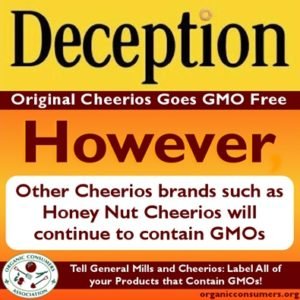


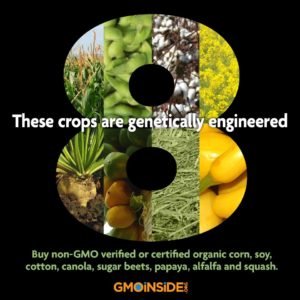
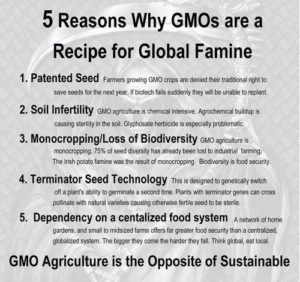



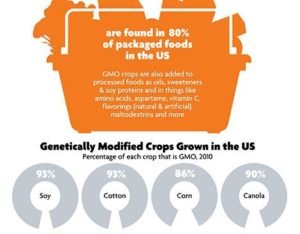

by Susan Dean | Feb 2, 2018 | Food and Health Dangers, Gardening, Health

Genetically Modified Organisms
The United States government has allowed genetically modified and engineered organisms to enter the public food supply with no warning. Every day, millions of people unknowingly ingest these GMOs because corporations like Monsanto (and the politicians they’ve bought and paid for) claim it’s unfair to require them to label their products.
Multiple scientific studies have linked GMOs to illness, disease, and mutations in plants, animals, and humans. Adverse affects are especially pronounced in pregnant women and children. The low price, processed foods carry most of the world’s GMOs. The only way to protect yourself from these toxic “foods” is to avoid buying and eating them.
These are the foods that are worth the extra time it may take to research origins and the extra money it may cost to buy organic. Buying local is ideal, because you can contact the farmer directly to ask what kinds of seeds are used.
- Tomatoeswere the first genetically modified crop to be commercially available in the U.S. In 1994, transgenic tomatoes known as FlavrSavrshit the market. They contained a “deactivated” gene that was supposed to prevent the fruit from getting soft as it ripened. It didn’t work as well as biotech companies hoped. Now, experts are praising a new technique whereby two enzymes, (A-Man, B-hex) are suppressed. There have been reports that some animals have died shortly after consuming GMO tomatoes.
- CornThis one is tough, because even foods that you wouldn’t normally associate with corn have ingredients, like sweeteners, that are derived from GMO corn. As Care2′s Jaelithe Judy reports, genetically modified cornand soybeans were developed by Monsanto in the 1990s to be resistant to the synthetic herbicide glyphosate (better known by Monsanto’s trademarked name for the weedkiller, Roundup). Now, more than 70 percent of corn produced in the United States is the genetically modified, herbicide-resistant variety. Fresh corn from Walmart should be especially avoided.
- PapayasIn the late 1980′s biotech researchers developed a papaya cultivar that would be resistant to Papaya Ringspot Virus. To do this, certain viral genes encoding capsid proteins were transferred to the papaya genome. Now, GMO papayas make up about 75 percent of the total Hawaiian papaya crop.
- Riceis considered to be one of the world’s staple crops. In many areas, it has been genetically modified to contain a high amount of vitamin A. More recently, it was discovered that an American company, Ventria Bioscience, has been cultivating rice that’s genetically modified (GM) with genes from the human liver. Although the company claims it’s only producing this rice to help speed pharmacuetical research, it’s growing it in open, outdoor fields. Meaning crops nearby can be unknowingly contaminated. China, which grows and consumes a huge percentage of the global rice supply, recently suspended distribution of genetically modified rice within its commercial food supplies over growing concern about its safety.
- Potatoeswere once one of the world’s most important staple crops, but thanks to growing awareness about the harm of too many empty carbohydrates, demand for potatoes as food has waned slightly in the past few years. Desperate for a way to infuse potatoes with more nutrients, researchers in India created a potato with thirty-five to sixty percent more protein using genes from the amaranth seeds. The potato is still very valuable to the starch and chemical industry, however. In order to protect these starch crops from pets and disease, potatoes are sometimes genetically modifiedwith Bacillus thuringiensis var. Kurstaki Cry 1. Yet, mice fed GE potatoes have shown abnormal amounts of toxins in their systems. According to Dr. Nina V. Fedoroff Willaman, Professor of Life Sciences and Evan Pugh Professor at Pennsylvania State University found that “rats fed the transgenic potatoes had significantly lower organ weights.”
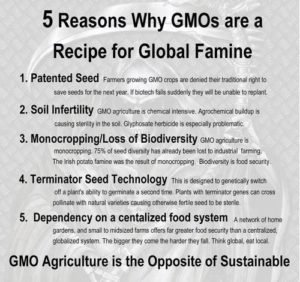
Research links Monsanto’s GMO corn to cancer, tumors and an increase risk of premature death in both men and women. News of the research is spreading like wildfire across the ‘net, and support for Proposition 37 — which seeks to label GMOs in foods — is growing by the day.
According to the Center for Food Safety, up to 85% of the corn grown in the United States is genetically modified. This means corn-based cereals that use non-organic corn have a very high likelihood of containing GM corn.
The following list presents the top 10 popular breakfast cereals most likely to contain Monsanto’s genetically modified corn. The exact GMO content of these cereals remains a mystery precisely because manufacturers of these cereals refuse to label them with their GMO content.
Legal note: This article is presented in the public interest, reflecting reasonable caution over a common food ingredient which French scientists have now convincingly linked to cancer and premature death in studies conducted on rats.
The top 10 popular breakfast cereals most likely to contain Monsanto’s GM corn
http://www.naturalnews.com/037315_Monsanto_GM_corn_breakfast_cereals.html#ixzz2Og4iFL7N
Which cereals contain no GMOs? Nature’s Path
There is only one brand of breakfast cereal I know of that’s 100% non-GMO and 100% organic across their entire product line. That company is Nature’s Path:
Many “natural” brands that appear to be healthful and natural are actually not organic or GMO-free. For example, “Barbara’s Bakery” cereals are not organic. Although they are positioned in store shelves alongside other organic cereals, they are actually made with conventional crops grown with pesticides that may include Monsanto’s Roundup.
You may notice that most of the cereal likely to contain GM corn are children’s cereals. It is the children in America who are being fed the most GMOs. This represents a highly unethical food experiment being conducted on an entire generation, and the long-term effects of human consumption of GMOs are simply not known. What we do know is that rats fed this very same Monsanto GM corn developed shockingly large cancer tumors.
The photo released by the French research team, showing large cancer tumors growing at a strongly heightened risk in rats fed a “lifetime” of Monsanto’s GM corn, is shown below. According to that study, 70% of females died premature and showed significant damage to their liver, kidneys and other organs.
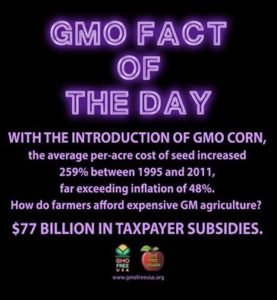
Top 10 Worst GMO Foods
1. Corn: As many as half of all U.S. farms growing corn for Monsanto are using genetically modified corn,” and much of it is intended for human consumption. Monsanto’s GMO corn has been tied to health issues that include weight gain and organ disruption.
2. Soy: Found in tofu, vegetarian products, soybean oil, soy flour, and numerous other products, soy is modified to resist herbicides. As of now Monsanto still has a tight grasp on the soybean market, with approximately 90 percent of soy being genetically engineered to resist Monsanto’s herbicide Roundup. In one single year, 96.7 million pounds of glyphosate was sprayed on soybeans alone
3. Sugar: According to NaturalNews, genetically modified sugar beets were introduced to the U.S. market in 2009. Like others, they’ve been modified by Monsanto to resist herbicides.
4. Aspartame: Aspartame is a toxic additive used in numerous food products, and should be avoided for numerous reasons, including the fact that it is created with genetically modified bacteria.
5. Papayas: GMO papayas have been grown in Hawaii for consumption since 1999. Though they can’t be sold to countries in the European Union, they are welcome with open arms in the U.S. and Canada.
6. Canola: One of the most chemically altered foods in the U.S. diet, canola oil is obtained from rapeseed through a series of chemical actions.
7. Cotton: Found in cotton oil, cotton originating in India and China in particular has serious risks.
8. Dairy: Your dairy products contain growth hormones, with as many as one-fifth of all dairy cows in America are pumped with these hormones. In fact, Monasnto’s health-hazardous rBGH has been banned in 27 countries, but is still in most US cows. If you must drink milk, buy organic.
9. and 10. Zucchini and Yellow Squash: Closely related, these two squash varieties are modified to resist viruses.
The dangers of some of these foods are well known. The Bt toxin being used in GMO corn was recently detected in the blood of pregnant women and their babies. All the risks that are still unknown.
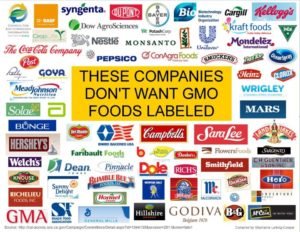
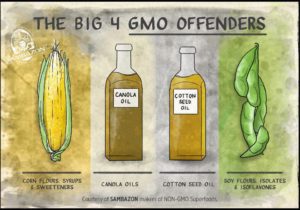
by Susan Dean | Feb 2, 2018 | Food and Health Dangers, Health, Kitchen Recipes, Medicinal Recipes

Sugar cravings and eating too many foods that contain sugar may cause health problems such as diabetes, obesity, and heart disease. The sugary foods that you eat will cause blood sugar to increase quickly and then crash. The blood sugar crash then makes you crave more sugar, so you eat more sugary foods and the cycle continues. According to Dr. Deirdre Rawlings of the Clayton College of Natural Health, one can break this unhealthy cycle by eating healthy foods that fight sugar cravings.
To combat sugar cravings, Dr. Rawlings recommends that people eat these top 5 healthy foods.Apple
Fruits taste naturally sweet, making them effective in fighting sugar cravings. One of the best fruits that helps fight sugar cravings is the apple. Apples taste very sweet and they are high in fiber. Fiber makes the stomach feel full and helps satisfy sugar cravings. Apples are easy to carry and they don’t need to be peeled or cut like other fruits. Apples take longer to chew, so the person eating it will soon start thinking that he is no longer hungry, thus reducing his sugar cravings.Sweet corn
Sweet corn is a healthy food that can help fight sugar cravings. Sweet corn is different from ordinary field corn because of its mutation at the sugary locus. Sweet corn is great for fighting sugar cravings because it tastes sweet when cooked and one will feel quite full after eating an ear of it. It is rich in antioxidants, vitamins, minerals, and dietary fiber.Sweet potato
Another vegetable that tastes sweet when cooked is the sweet potato. Sweet potatoes can be chopped up and then fried to make sweet potato fries. Sweet potatoes will not only satisfy sugar cravings, but supply the body with vitamin C, vitamin D, vitamin B6, and iron. The nutrients in sweet potatoes can help prevent heart disease, cancer, and other degenerative diseases.
Cinnamon
The extraordinary properties of cinnamon can help fight sugar cravings. The main active ingredient of cinnamon is hydroxychalcone, which helps enhance the effects of insulin and satisfies your sugar cravings. Cinnamon prevents the blood sugar spikes that cause sugar cravings and normalizes blood sugar levels.
Tomatoes
Tomatoes can also fight sugar cravings because they are high in serotonin. Studies suggest that low serotonin levels are among the main causes of sugar cravings. The serotonin in tomatoes functions as a neurotransmitter that tells a person’s brain that his sugar cravings have been satisfied. Tomatoes are high in chromium, a mineral that reduces food cravings, regulates cholesterol, fat and blood sugar levels.
The foods in this list will fight sugar cravings and improve the body’s overall health. Dr. Rawlings recommends that these foods be included in one’s daily diet so that one will be able to keep sugar cravings at bay
Get Rid of Sugar in Your Diet – Sugar is addictive. It is in almost everything in a grocery from vitamins to cereals, canned goods, sauces, pickles, jams and jellies, breads, and numerous drinks. Not to mention the candy and cake and cookies! For you to eat 1 teaspoon of refined sugar, you would have to eat 8 pounds of sugar beets! Nobody does that. It’s not normal. Too much sugar throws you off balance, can cause heart disease, diabetes, and give you the sugar blues! Use natural sugars like honey, molasses, or dark maple syrup occasionally but cut sugar out of your diet as much as possible.
Follow these simple steps to get rid of the sugar:
Eat quality meat and eggs from pastured or grass fed animals at each meal to control blood sugar.
Eat wild fish 3 times a week for omega-3′s.
Eat good fat at every meal from coconut oil, grass fed butter, ghee, red palm oil, olive oil for balanced hormones.
Drink 64 oz of pure water daily for proper cellular function.
Eat 4 cups of colorful vegetables daily to Detox.
Clean out your cupboards of tempting snacks and treats.
Don’t buy sugar filled products.
Associate with people who do not eat sugar for support.
Do some exercise like walking, circuit training, sprinting, intervals 3 days a week.
Practice deep breathing and slow stretching everyday.
Find your burning reason to do this and keep it posted on the fridge.
Get 8 hours of sleep from 10:30 pm to 6:30 am every night.
Work with a qualified health care practitioner to help choose sugar detox supplements.

